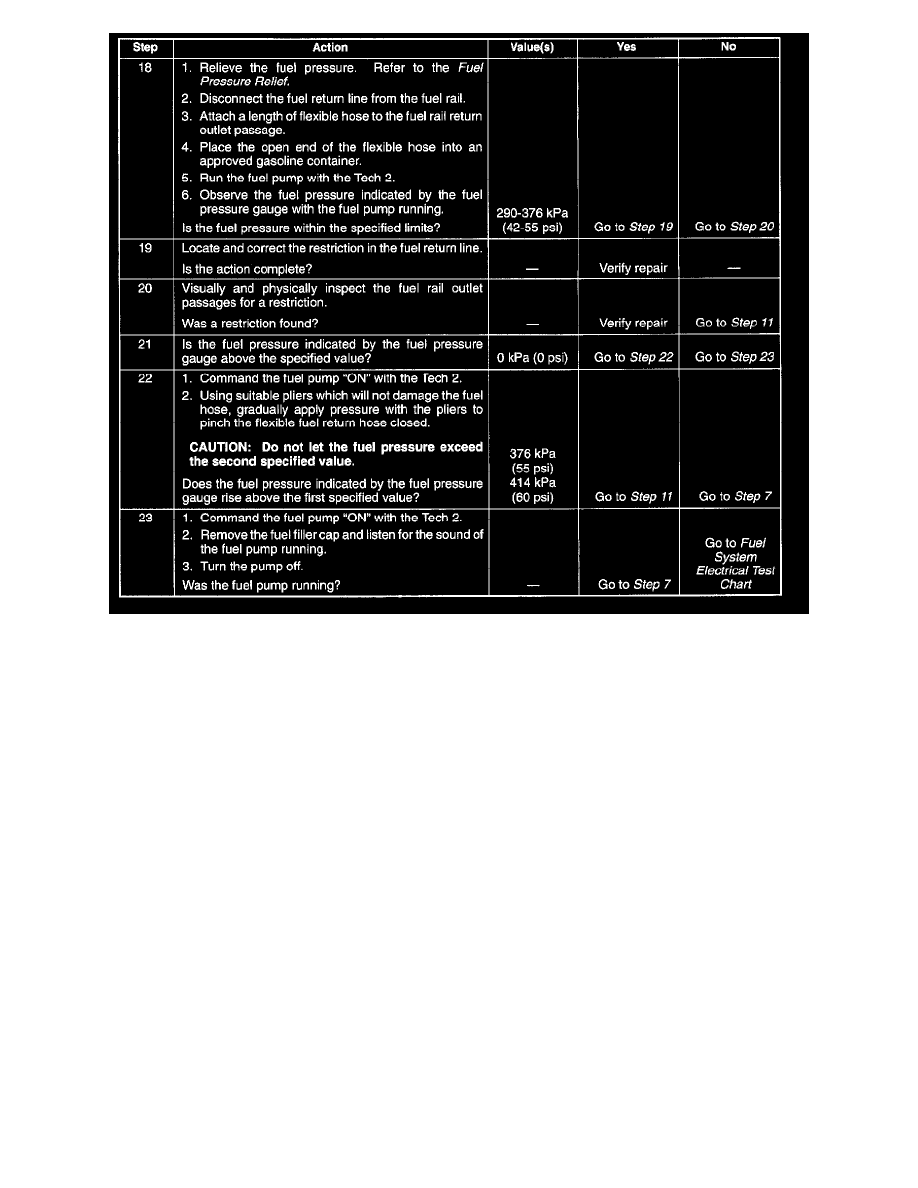Rodeo Sport 2WD V6-3.2L (2001)

Steps 18 - 23
Test Description
Number(s) below refer to the step number(s) on the Diagnostic Chart.
2. Connect the fuel pressure gauge to the fuel feed line as shown in the fuel system illustration. Wrap a shop towel around the fuel pressure
connection in order to absorb any fuel leakage that may occur when installing the fuel pressure gauge. With the ignition switch "ON" and the fuel
pump running. the fuel pressure indicated by the fuel pressure gauge should be 333 - 376 kPa (48 - 55 psi). This pressure is controlled by the
amount of pressure the spring inside the fuel pressure regulator can provide.
3. A fuel system that cannot maintain a constant fuel pressure has a leak in one or more of the following areas:
-
The fuel pump check valve.
-
The fuel pump flex line.
-
The valve or valve seat within the fuel pressure regulator.
-
The fuel injector(s).
4. Fuel pressure that drops off during acceleration, cruise, or hard cornering may case a lean condition. A lean condition can cause a loss of power,
surging, or misfire. A lean condition can be diagnosed using a Tech 2. If an extremely lean condition occurs, the oxygen sensor(s) will stop
toggling. The oxygen sensor output voltage(s) will drop below 500 mV. Also, the fuel injector pulse width will increase.
IMPORTANT: Make sure the fuel system is not operating in the "Fuel Cut-off Mode".
When the engine is at idle, the manifold pressure is low (high vacuum). This low pressure (high vacuum) is applied to the fuel pressure regulator
diaphragm. The low pressure (high vacuum) will offset the pressure being applied to the fuel pressure regulator diaphragm by the spring inside the
fuel pressure regulator. When this happens. the result is lower fuel pressure. The fuel pressure at idle will vary slightly as the barometric pressure
changes, but the fuel pressure at idle should always be less than the fuel pressure noted in step 2 with the engine "OFF".
16. Check the spark plug associated with a particular fuel injector for fouling or saturation in order to determine if that particular fuel injector is
leaking. If checking the spark plug associated with a particular fuel injector for fouling or saturation does not determine that a particular fuel
injector is leaking. use the following procedure:
-
Remove the fuel rail, but leave the fuel lines and injectors connected to the fuel rail. Refer to Fuel Rail Assembly in On-Vehicle Service.
